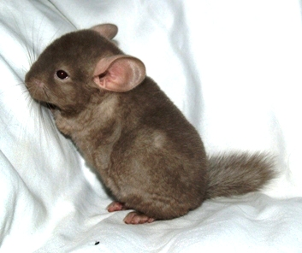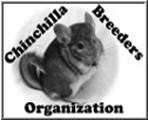To begin with, quarantine is a method of preventing the spread of illness that separates the newcomer from the established group (in this case, the new chinchilla and the chinchillas already living in the home). Quarantine is accomplished by placing the new chinchilla in a separate cage and a separate room of the house where no other chinchillas are. If there is more than one new chinchilla, they should each have a cage of their own and a room of their own (unless they all came from the same breeder at the same time). Even if all of the chinchillas came from the same breeder, but at different times, quarantine should still be done. Whenever chinchillas are handled, hands should be washed and clothing changed before visiting any other chinchillas.
 A six week old kit
A six week old kit
So, the new chinchilla looks fine. Does it need to be quarantined? Yes. As mentioned before, an animal can carry a pathogen and not be affected by it. This means that the chinchilla could look fine, but carry something that would make the other animals in the home ill. The reverse is true, too. A healthy chinchilla that has lived in the home is capable of giving a pathogen to a new chinchilla making it ill. Overall, quarantine is a method that helps keep all of the chinchillas healthy. It diminishes the risks that accompany the arrival of a new member to the group and helps prevent the illness and possible loss of one or more beloved pets.
Additionally, quarantine gives the owner a chance to get to know the new chinchilla without the stress of another chinchilla being present. This time will allow the owner to discover what is normal for the new chinchilla when it comes to behavior and health.



 Site Last Updated on December 31, 1969 05:00 pm
Site Last Updated on December 31, 1969 05:00 pm